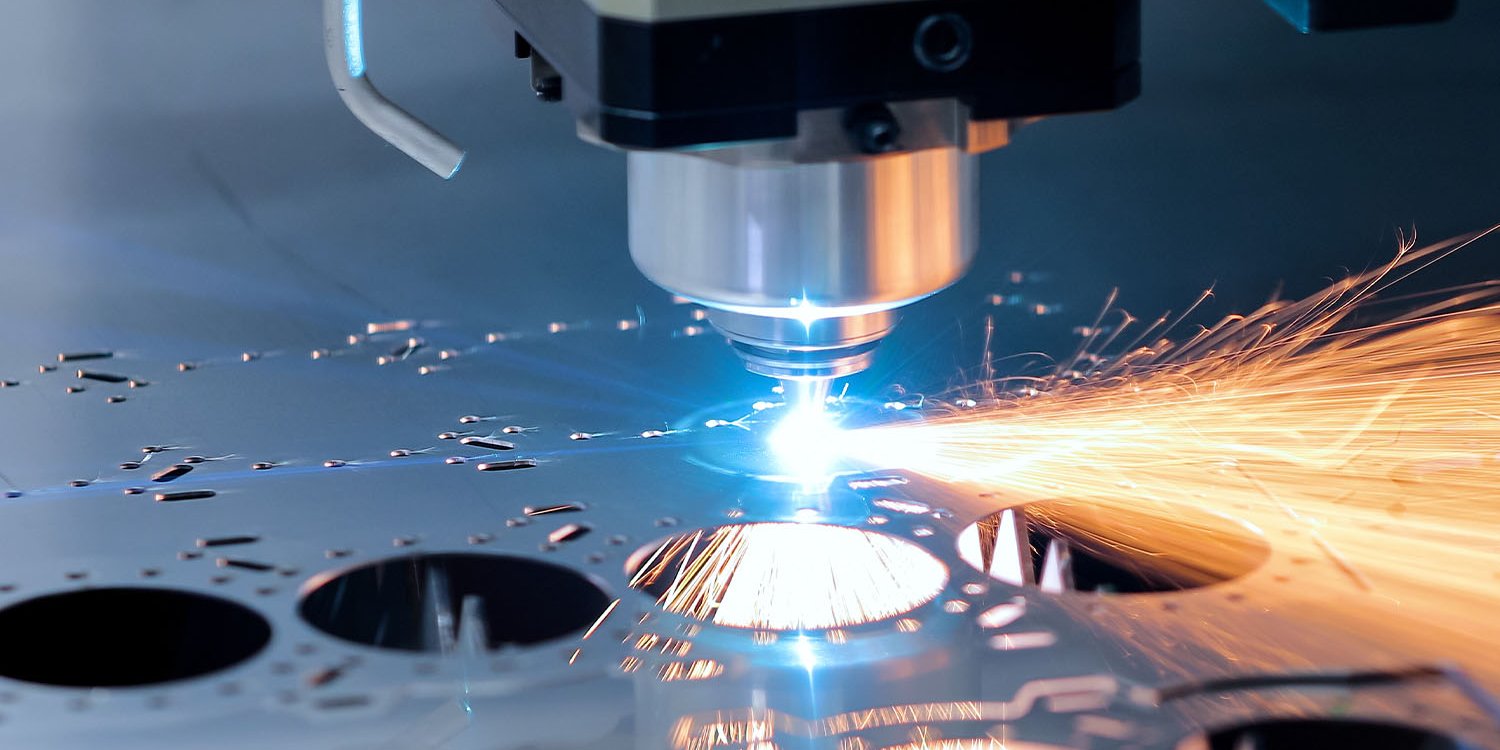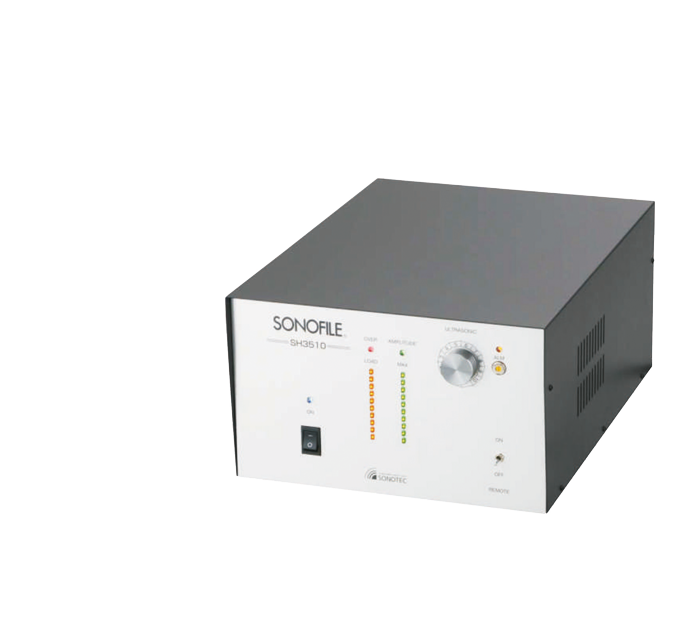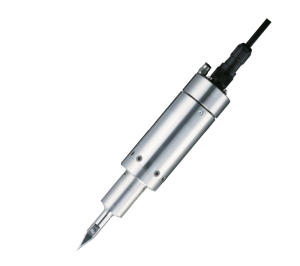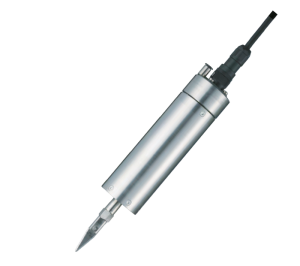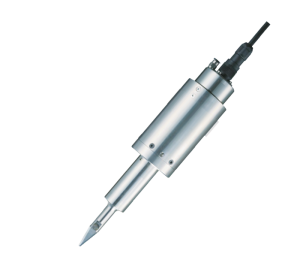Ultrasonic-Cutting
Products
Ultrasonic-Cutting

Features
- Cutter with a maximum power output of 500 W capable of handling materials requiring high-power cutting
- Tools including carbide blades and long blades can be used
- Mountable on automated machinery, industrial robots and plotters
The oscillator with a maximum power output of 500 W enabled powerful cutting of difficult-to-cut and extra-tough work pieces. Abrasion resistant carbide blade with 1 mm thickness can be used. Exchanging signals for on/off, emergency stop, change of output level, and other features with automated machinery or industrial robots is, of course, possible.
Applicable materials
- Carbon (CFRP)
- A range of prepregs (boron, kevlar, polyethylene fiber, etc,)
- Rubber (vulcanized latex, non-vulcanized latex, sheeting material, sealing material, tube)
- Thermoplastics (board, sheeting material, film and laminated material)

Feautures
- Powerful ultrasonic cutter with a maximum power output of 300 W
- Mountable on automated machinery, industrial robots and plotters
This ultrasonic oscillator is capable of exchanging signals with the main units of automated machinery, industrial robots, plotters, etc., for operations, such as turning on/off, emergency stop and switching the output level.
Applicable materials
- Various types of prepregs (boron, Kevlar, polyethylene fibers, etc.)
- Rubber (vulcanized latex, non-vulcanized latex, sheeting materials, sealing materials and tubes) and leather (natural and artificial)
- Thermoplastics (boards, sheeting materials, films, laminated materials, flooring materials)
- Fabric materials, nonwoven fabrics and paper (specially-treated paper and coated paper)

Feautures
- Stable vibrations with a maximum amplitude of 30 microns ensure remarkable cutting performance
- Our unique technologies suppress the heat generation of transducers, thus enabling extended continuous use
- Adoption of the exclusive square-head screws and the screwdriver ensures easy and robust mounting of tools
This is a high-frequency cutter featuring the 40 kHz (40,000 vibrations per second) vibration frequency of tool with the amplitude of 30 microns. It maximizes the effect of ultrasonic high-speed micro vibrations. A wide range of materials, including newly developed composite materials, rubber and leather, can be cut at will with low processing pressure, sharp cutting surface and little cutting chips. The power control circuit specially developed by us and the cooling air inlet suppress the heat generation of transducer even for large amplitude, thus enabling extended continuous use. (For a long-time operation without air cooling, contact us.)
Applicable materials
- Rubber (vulcanized latex, non-vulcanized latex, sheeting materials, sealing materials and tubes) and leather (natural and artificial)
- Thermoplastics (boards, sheeting materials, films, laminated materials, flooring materials)
- Fabric materials, non-woven fabrics, and paper (specially-treated paper and coated paper)

Features
- An ultrasonic cutter featuring the size convenient for carrying around
- The transducer is provided with a hand switch and the activation of operation is notified with illumination and sound
- The cutter can also be used as a versatile machine for cutting various materials.
This is a manual type ultrasonic cutter, which daringly pursued nice Features user-friendliness. It is provided with a portable handle and storage rack for use at various jobsites. It is best fitted for a wide range of applications including carbon prepregs, resins, rubber, and fabrics. For safety measures, the activation of ultrasonic vibration is reported with illumination and sound. The product complies with the CE Standard.
Applicable materials
- Carbon prepregs with thickness up to 10 mm
- Thermoplastics
- Rubber
- Fabrics
The ultrasonic cutter is composed of a “transducer” that generates vibration and an “oscillator” that drives the transducer. A piezoelectric element is used for the transducer. When voltage is applied, the piezoelectric element displaces the transducer by a few micrometers. Periodically applying voltage generates vibration. Each object has its special frequency, by which the object is stable and easy to vibrate. By adding an external force that corresponds to that special frequency, a small force can obtain a large vibration. This phenomenon is called resonance.
In the ultrasonic cutter, the piezoelectric element generates a force that resonates the whole body, from the transducer to the blade tip, generating a large vibration at the tip. The oscillator periodically generates voltage to resonate and drive the transducer. Using a component of the ultrasonic cutter called the horn to wring the cross-sectional area, from the piezoelectric element to the blade tip, can obtain a larger vibration

